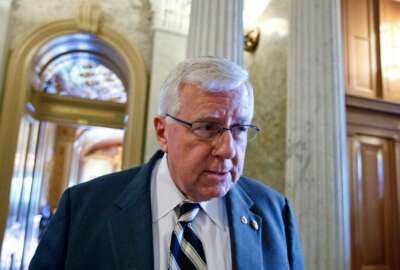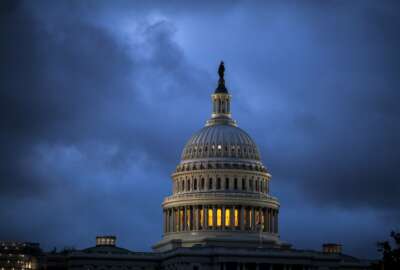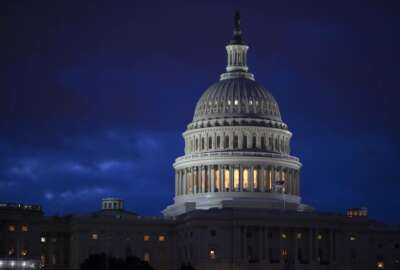
The path forward for Trump’s proposed federal retirement cuts in 2020
Lawmakers have declared the president's 2020 budget request "dead on arrival," but there are a few ways the proposed federal retirement cuts could see the light of...
News of the Trump administration’s latest proposals to cut retirement benefits in 2020 likely elicited a tired eye roll from federal employees this year.
The reaction is justified, considering it’s the third consecutive year the administration made such proposals in the president’s annual budget request. Even before that, Congress had made similar attempts during the Obama administration.
Some lawmakers are already declaring the president’s budget “dead on arrival,” but there are a few ways the administration’s proposed federal retirement cuts could materialize.
Watch the budget resolution, reconciliation
First, federal employees should keep an eye on the Senate budget resolution, which cleared the Budget Committee last week.
The resolution includes reconciliation instructions, which directs the Senate Homeland Security and Governmental Affairs Committee to find $15 billion in savings over the next five years.
The reconciliation instructions don’t explicitly tell the committee what to do in order to meet the $15 billion savings goal. The Homeland Security and Governmental Affairs panel could meet the $15 billion goal by finding cuts or ways to generate revenue, Budget Committee Chairman Mike Enzi (R-Wyo.) said last week.
Related Stories
“When we’re $22 trillion and project deficits of $109 trillion over the next 30 years, we have to look at this. We can’t take anything off the table,” Sen. Ron Johnson (R-Wis.), chairman of the committee tasked with finding the $15 billion, said. “As chairman of the committee, I would certainly do everything we could to protect the federal workforce but get it in line with the private sector.”
Attempts from Sens. Chris Van Hollen (D-Md.), Tim Kaine and Mark Warner (D-Va.) to strike those specific reconciliation instructions and keep federal retirement off the table in reconciliation negotiations failed.
But passage at the committee level is the first step in a long process. The Senate first needs to pass the 2020 budget resolution with these reconciliation instructions. The House would need to do the same, which under Democratic leadership, seems unlikely. The House hasn’t unveiled its own budget resolution yet, but it’s bound to look much different than the Senate’s version.
Next, the House and Senate will need to conference over the differences and agree to a joint budget resolution. Both chambers will need to vote again to pass the joint budget resolution before it’s adopted.
The goal of reconciliation is to secure a path for Congress to pass potentially contentious legislation with a simple majority of 50 votes in the Senate rather than the typical 60. Congress, for example, used reconciliation to pass the Affordable Care Act back in 2010.
But at this point, it’s unclear exactly what congressional leadership would use reconciliation for. The House last advanced reconciliation instructions back in 2017 — including directions to the Oversight and Government Reform Committee to find $32 billion worth of federal retirement cuts — as the vehicle to advance tax legislation with a simple majority vote.
“There doesn’t seem to be an appetite to do that at all this year,” Klement said. “Where I think we would see it is [in] a major infrastructure or something that we can’t quite foresee, something else that comes up.”
Congress did, of course, pass major tax legislation and used budget reconciliation to get there, but the final resolution didn’t include federal retirement-related cuts.
Watch for sequester offsets
Still, federal employees haven’t been so lucky in the past.
The Budget Control Act of 2011 sets spending levels for defense and non-defense agencies. According to this law, lawmakers must raise spending caps themselves and find a way to offset the increases; otherwise, automatic spending cuts through sequestration will kick in.
These spending caps — and the hoops Congress must jump through to increase and offset them — have been at the center of lawmakers’ budget debates over the past several years.
Congress tapped into federal retirement benefits in 2013 to offset spending increases, which resulted in a change to the Federal Employee Retirement System (FERS). Federal employees hired in 2014 or after contribute 4.4 percent to their pensions, as opposed to 3.1 percent for employees hired in 2013 and 0.8 percent for employees hired before 2013.
This scenario has been a concern for organizations like NARFE and others since then. Congress strongly considered raising employee pension contributions to offset spending under the Bipartisan Budget Act of 2015.
Congress last year left federal retirement benefits untouched in the 2018 Bipartisan Budget Act, which set spending for 2018 and 2019 and raised the caps by more than $300 billion. The budget deal included only $100 billion in offsets. Again, federal retirement benefits weren’t part of the deal.
But Congress hasn’t agreed to a plan for 2020 and 2021. It must first agree to raise spending caps or risk the return of sequestration. Then, lawmakers must find a way to offset an increase in those spending caps, and federal employees’ pensions could be a logical place to find savings.
“We still have to offset sequestration, and that is a more likely place to see some of these cuts play out,” Klement said.
Heated debates over what these spending limits will be is at the center of congressional discussions in the coming months. The Trump administration’s 2020 budget request recommends capping non-defense agencies at the BCA limit of $543 billion, a 9 percent drop from what Congress enacted in 2019. The administration isn’t proposing an increase in the defense spending cap of $576 billion, either. Instead, the White House is recommending it make up the difference through a dramatic boost to Overseas Contingency Operations funding to arrive at a total of $750 billion.
Achieving parity between defense and non-defense spending will be a top priority for Democrats, as it has been for years. Republicans have and will continue to advocate for deficit reductions. Federal employees’ retirement benefits may lie somewhere in the middle as Congress tries to find a compromise.
Copyright © 2025 Federal News Network. All rights reserved. This website is not intended for users located within the European Economic Area.
Nicole Ogrysko is a reporter for Federal News Network focusing on the federal workforce and federal pay and benefits.
Follow @nogryskoWFED






